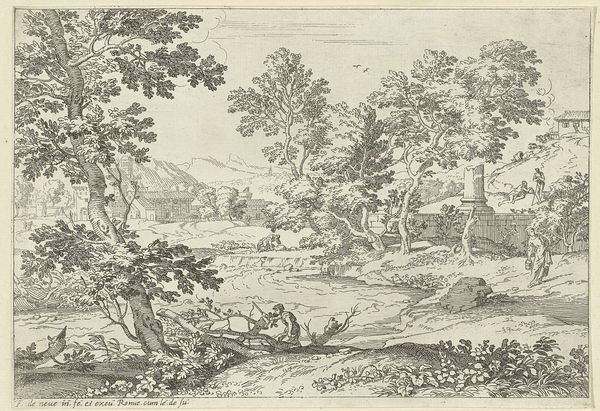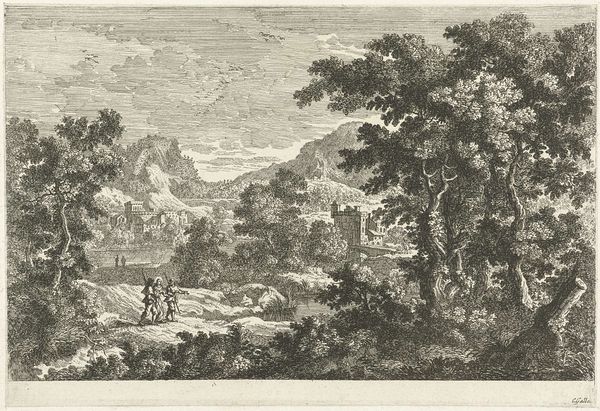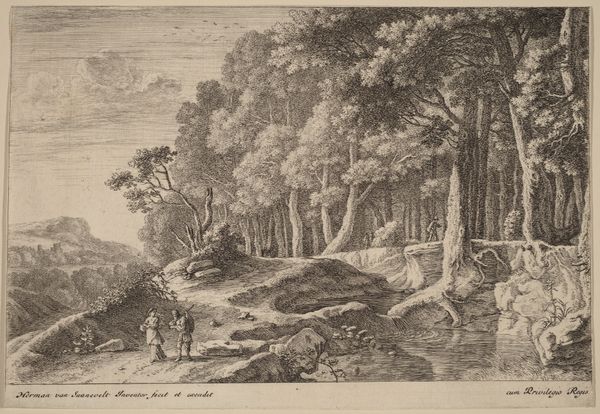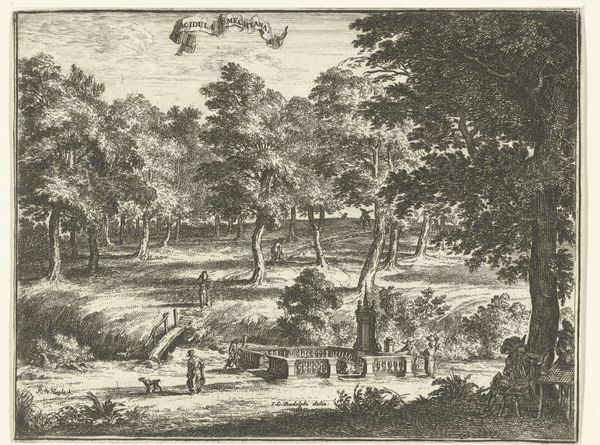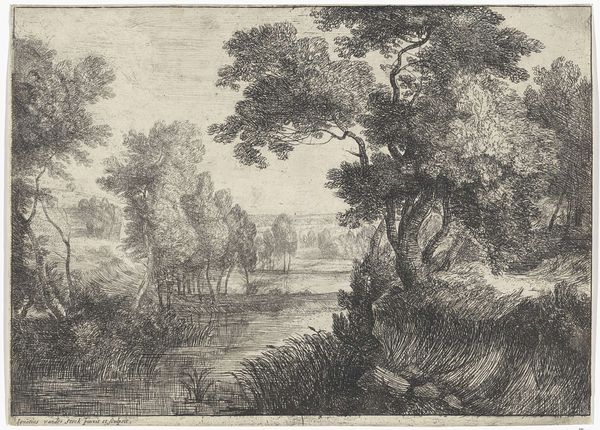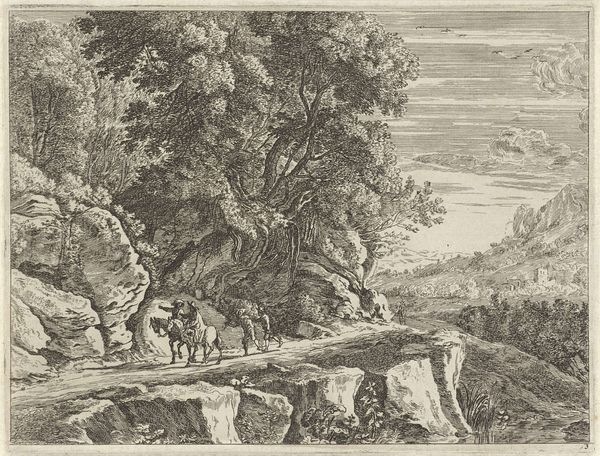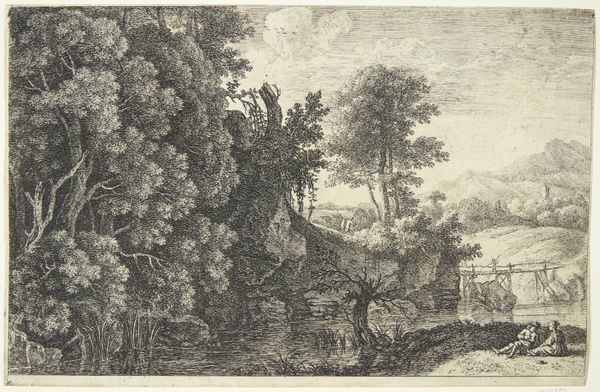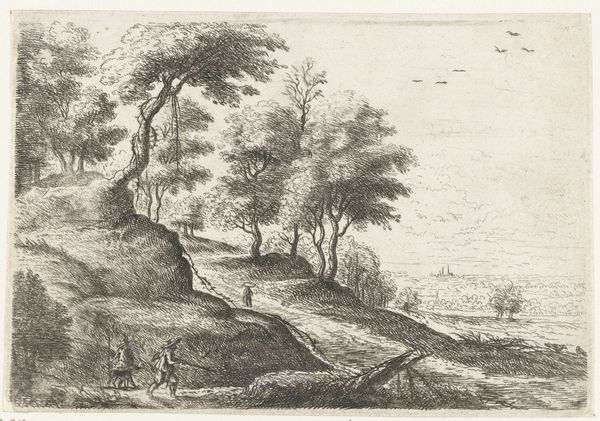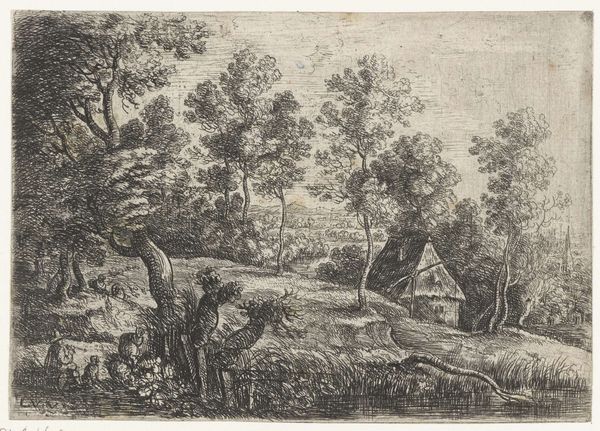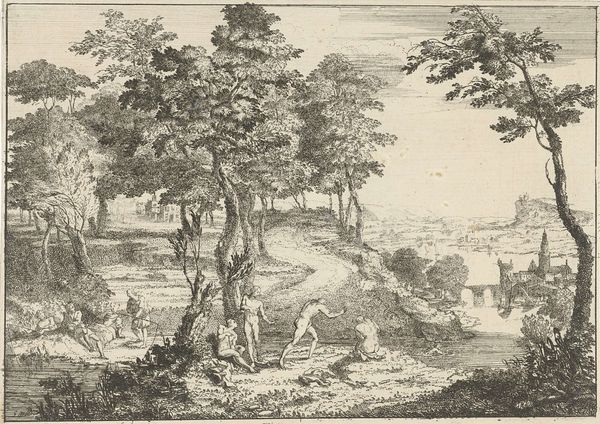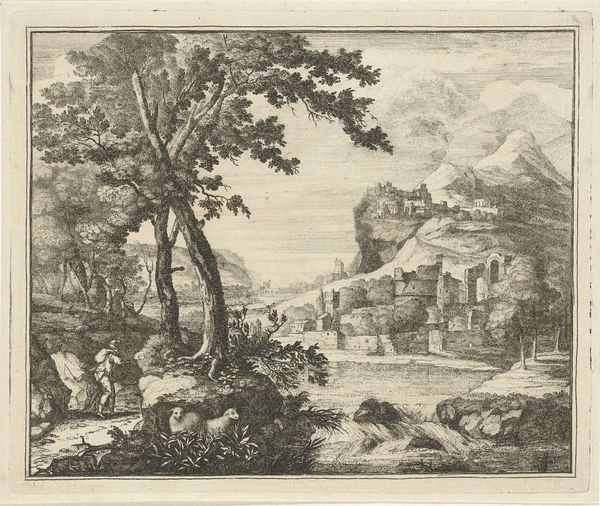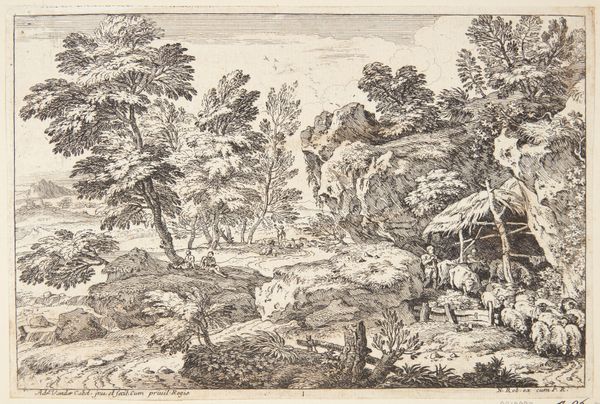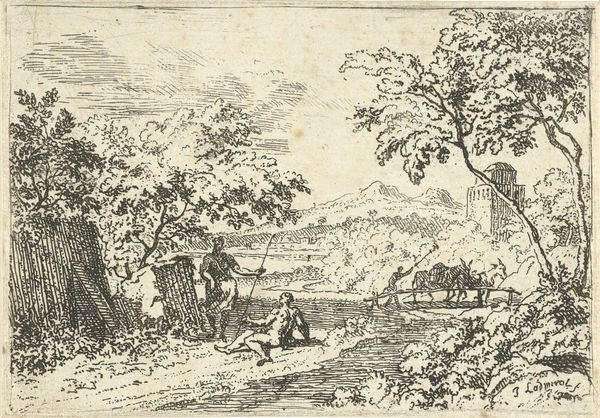
drawing, print, etching
#
drawing
#
dutch-golden-age
# print
#
etching
#
landscape
#
etching
#
pencil drawing
Dimensions: height 218 mm, width 311 mm
Copyright: Rijks Museum: Open Domain
Claes Jansz. Visscher created this landscape scene with Tobias and the Angel using etching, a printmaking technique involving biting lines into a metal plate with acid. The material qualities of the print – the fineness of the lines, the subtle gradations of light and shadow, all rendered in monochrome – give the image a sense of delicate detail. This was achieved through skilled labor, applying an acid-resistant ground to the plate, drawing the composition with a needle, and then immersing the plate in acid. The longer the plate is exposed, the deeper the lines, and the more ink they hold, resulting in darker tones. Prints like this one, were relatively inexpensive and could be reproduced in large numbers, making art more accessible to a wider audience. Visscher's technical skill and his choice of subject matter, reflect the growing urban and literate population and an expanding market for art. The print is not just an image, but an object produced through a complex interplay of material, technique, and social context, reflecting the changing landscape of art and society in the 17th century.
Comments
No comments
Be the first to comment and join the conversation on the ultimate creative platform.
